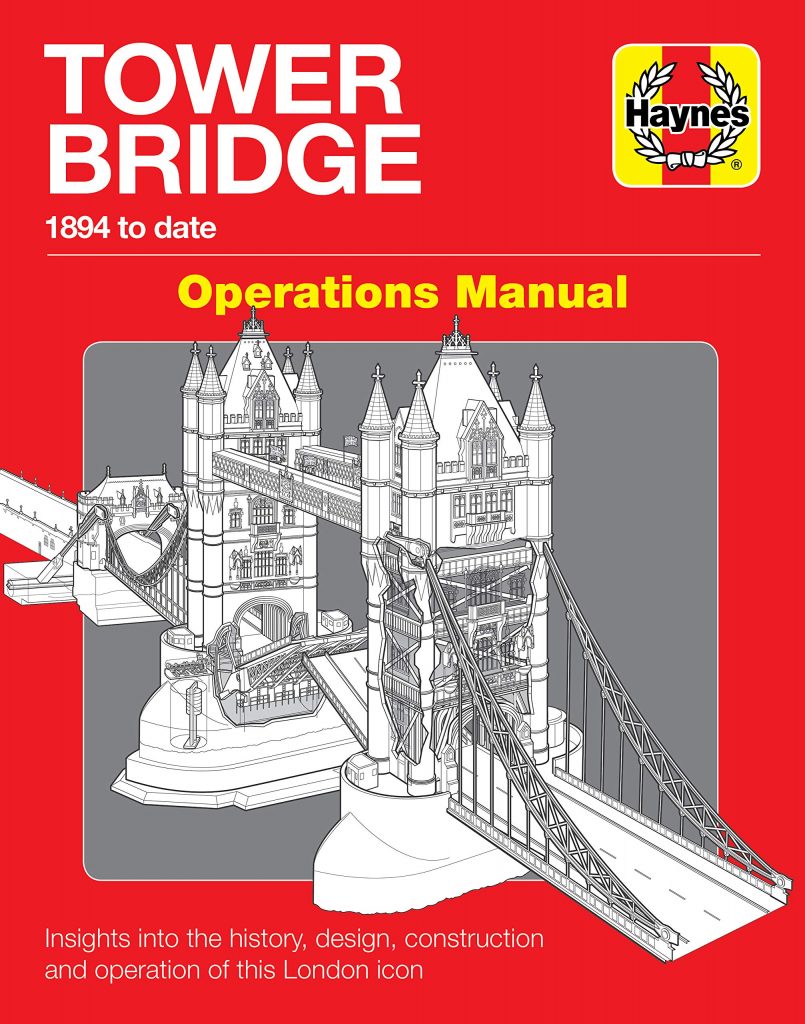Tower Bridge is a London icon and an engineering marvel. One of the first steel bridges in the world, it employed cutting edge steam and hydraulic technology. It is actually ten bridges – two masonry arch bridges forming the approaches, two suspension bridges linking the abutments with the river piers, two simply-supported steel bridges carrying the roadway over the bascule chambers, two bascule bridges, and two cantilevered footbridges. Since 1960, when catenary cable suspension bridges were added to carry the dead weight of the high-level ties of the suspension bridges, there have been 12 bridges on the site.
The need for a new bridge near the Tower of London (a “Tower Bridge”) was foreseen as early as 1824, when a high-level suspension bridge was proposed by Captain Samuel Brown RN and civil engineer James Walker, but it would be another 60 years before the Court of Common Council, the primary decision-making body of the Corporation of London, authorised the building of the bridge.
Many hopeful bridge designers submitted designs for the bridge, but there was never a formal competition with an entry cut-off date, rules, a panel of judges and a prize. The City and the Metropolitan Board of Works (MBW) were the main contenders to design and build the bridge. The MBW, under Chief Engineer Sir Joseph Bazalgette, had just completed the epic project of building a new sewer system for London, including the construction of the Albert, Victoria and Chelsea embankments. Sir Joseph submitted four designs for the Tower Bridge but there was bad blood between the City and MBW and all of his designs fell on deaf ears.
The initial concept and architectural treatment for the bridge as built was by Horace Jones, Architect and Surveyor and Clerk of the City’s Works. The designer and Engineer of the bridge was John Wolfe Barry, supported by Henry Marc Brunel and George Stevenson. Contractors included Sir William Arrol, who also built the Forth Bridge, and Baron Armstrong of Cragside, a veritable Titan of 19th century engineering.
After an 8 year construction period, Tower Bridge opened to road and river traffic on 30 June 1894. The bridge survived Zeppelin raids in 1915-1916 and the Blitz of 1940. It has been struck several times by shipping and has escaped being hit by aircraft on at least seven occasions, the most dangerous of which was on 5 April, 1968 when Flt. Lt. Alan Pollock flew his Hawker Hunter jet fighter aircraft under the walkways in an unauthorised celebration of the 50th anniversary of the RAF. Arrested upon landing, he would later be invalided out of the RAF to avoid the publicity of a Court Martial.
I rather imagined that this event would have been something that Alan Pollock would have wished to forget, so it was an absolute delight to read an interview he gave in April 2018, fifty years later. He described how he had made the decision to celebrate the anniversary on the morning of 5th April, just before flying back with three other No. 1 Squadron pilots from the famous Battle of Britain airfield RAF Tangmere to West Raynham in Norfolk. He had marked a low-level route across London on a borrowed AA road map. He flew east along the Thames, flying at 150 feet. Approaching the Palace of Westminster, he opened up the throttle and made three loud circuits before flying east across several bridges and under the Tower Bridge walkways. He had not planned to fly below the walkways, but suddenly they were just there! He burned the AA map upon arrival at his home airbase. He received hundreds of letters of appreciation from RAF colleagues and members of the public After a long and successful career in Civvy Street Alan had no regrets. Good man!
During its lifetime, the bridge has been raised and lowered nearly half a million times, always giving precedence to shipping rather than road traffic, as witness the incident in May, 1997 when the motorcade of US President Bill Clinton was divided by the opening of the bridge.
Tower Bridge is now much more than a bridge. It is a major tourist attraction, a museum, a popular film location, an unusual concert venue and a prestige location for wedding receptions and banquets. A highlight of the bridge for visitors, the glass walkways, give a frightening insight into what it must have been like for the more than 400 men who built the bridge in the days before Health & Safety became a major consideration at construction sites.
This web site presents a detailed history of the bridge and describes “how it works”. For those looking for more detail and fascinating historical images of original architect’s and engineering plans, the Haynes Tower Bridge Operations Manual (ISBN 978 1 78521 6497) is available from the Haynes Publishing website, amazon.co.uk and all good real and virtual bookshops.
